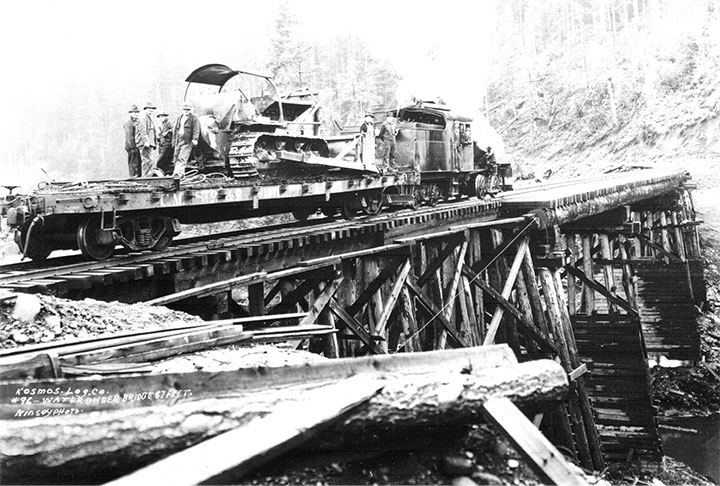In 1936, the Kosmos Logging Company was formed with the financial backing of Robert S. Fox of the Seattle Export and Tacoma Export Lumber Companies. By June first of that year, construction of a new road from the small Eastern Lewis County town of Kosmos to Morton was started. Early logging was started south of the Cowlitz River and conducted on a two shift day with trucks running from daylight to dusk to a reload located on the Milwaukee Railroad at Morton.
Robert Fox insisted that this new operation be rail orientated, so by August 1937, construction of a railroad started with an interchange with the Milwaukee Road where the reload had been located at Morton. During this same time, the use of trucks was discontinued. The Milwaukee Road hauled the loads to Tacoma where the logs were dumped into Puget Sound by means of a jill-poke.
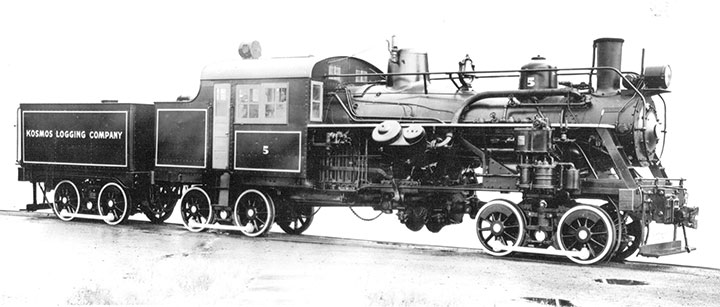
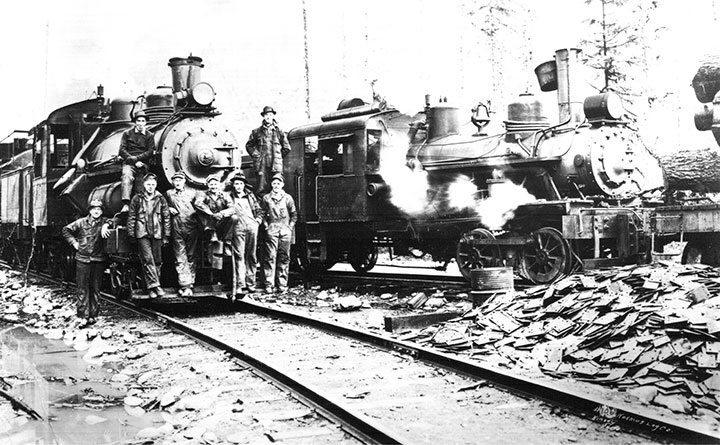
-Photo by Clark Kinsey.
In the spring of 1938, construction of a bridge over the Cowlitz River was started to tap a stand of the tallest old growth yellow fir to be seen. The Cowlitz is a large river and ordinarily a steel structure would be required. A steel bridge at that time would have cost several hundred thousand dollars. Since it was the later part of the great recession, the company didn’t have or have access to that kind of money. So, they hired an engineer named John H. Markham to design a wood bridge to access the Landers Creek area. Camp 2 was eventually established at Iron Creek, some 22 miles from Kosmos in Skamania County, and was accessible by rail only. They had a fleet of five used Heislers plus two new 90-ton “West Coast Specials” purchased in September, 1939. Three used three-truck Shays, one a big 100 Tonner, rounded out the roster.
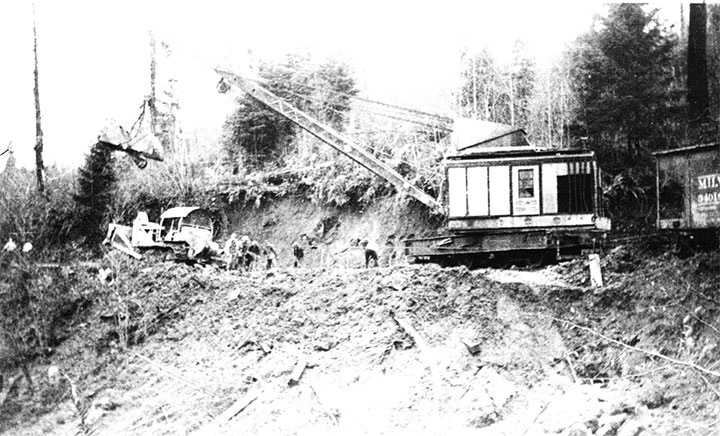
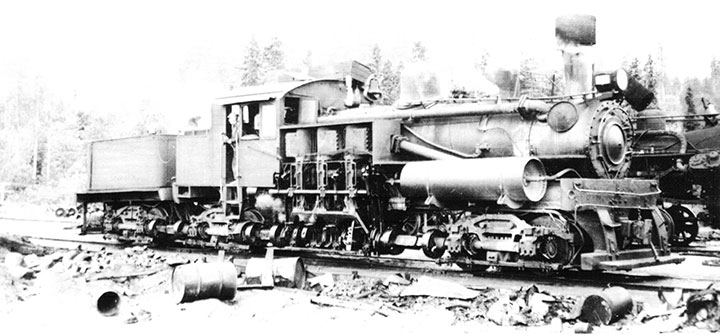
Camp 1 was established right at the town of Kosmos and as many as 500 men were employed. The name was changed to Kosmos Timber Company around 1940. Initially, Bob Fox pur-chased a bunch of old streetcar bodies from the city of Tacoma to be used as bunk houses. In 1945, Camp 1 burned, and he replaced them with bunk houses he had built at his sawmill in Seattle, and had the Milwaukee Road move them on flat cars to the interchange at Morton. In 1947, Bob Fox sold his interest in the company to United States Plywood Corporation. Under the new ownership, a veneer plant and a salvage sawmill were established at Kosmos, and a mill pond was dug.
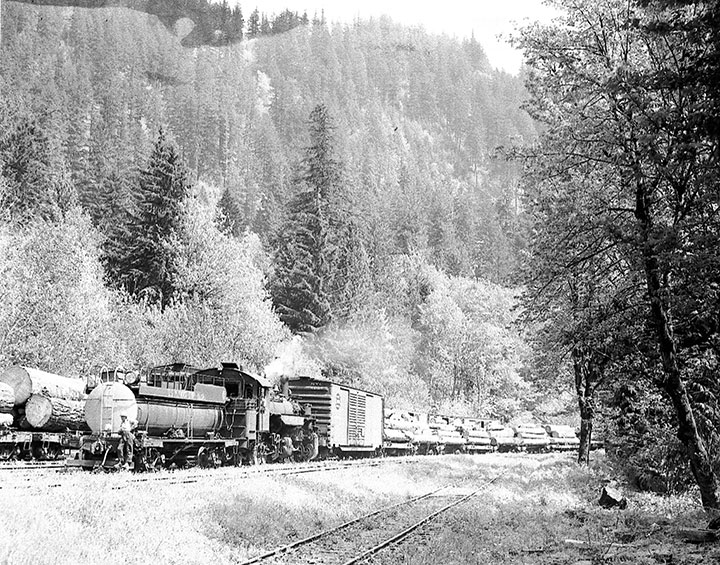
-Photo, collection of Martin Hansen.
U.S. Plywood increased production in 1947 as they were running out of sources for peeler logs to make plywood. At the peak of production, Kosmos Timber put out 128 loads a day, with an average of 100 loads per day. Additional bunk houses had to be built to house the addition of more men. On average, seven locomotives a day were used. Under U.S. Plywood ownership and after they had abandoned all rail lines south of the Cowlitz River, they acquired two tank Mallets from Weyerhaeuser Timber Company, and in 1953, a brand new EMD SW-9 1200 horsepower switcher. A three percent grade right out of the town of Kosmos limited the number of loads that could be pulled at one time. A helper was always required on this part of the run with one engine pushing on the rear. One Mallet could pull ten or eleven loads and the big Shay, twelve loads, while the Diesel could handle seventeen loads.

-Photo, collection of Martin Hansen.
In the early 1960s, a huge hydro-electric project was being proposed by Tacoma City Light to dam the Cowlitz River in two different places which would flood out the town of Kosmos. So, in 1962 the railroad was completely abandoned, and by 1969, the town of Kosmos was under water.
One of the Mallets still exists today, and operated for a few years at the Northwest Rail Museum at Snoqualmie, Washington. Today she is on display behind the depot, still lettered for U.S. Plywood. As I recall, the Diesel sat in the Milwaukee Road roundhouse for several years in Tacoma, before finally being resold. Simpson Timber Company of Shelton, Washington, considered buying it, but felt the asking price of about $85,000 a bit high for a used Diesel.
